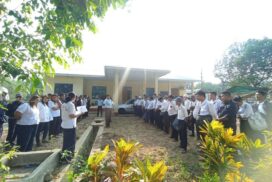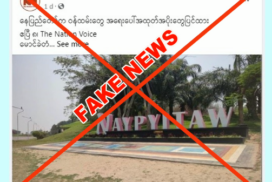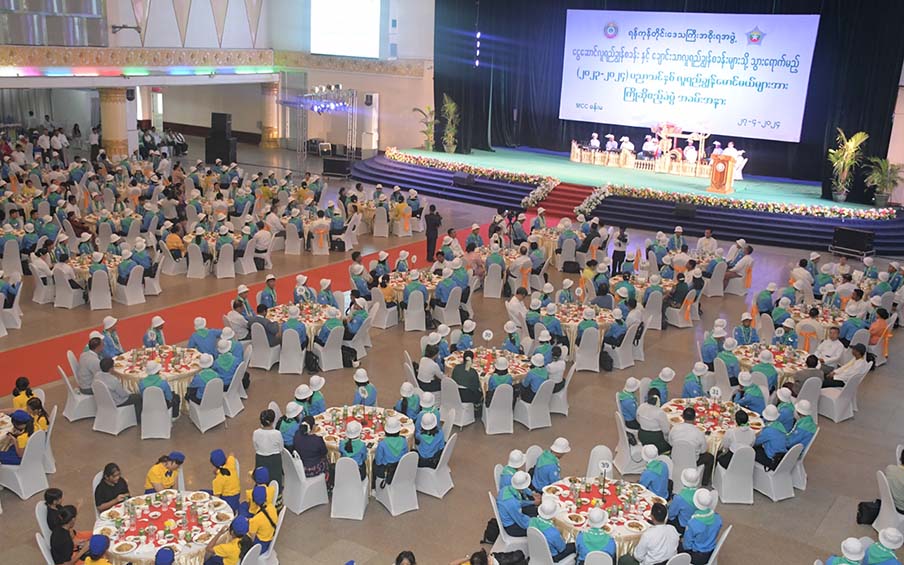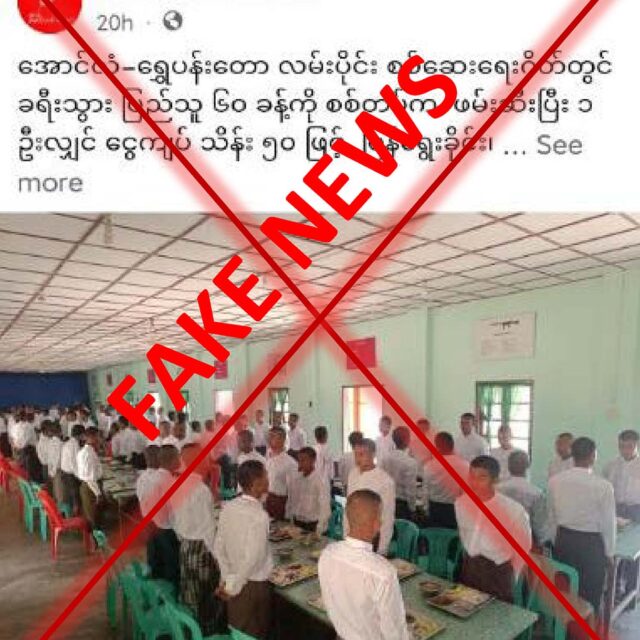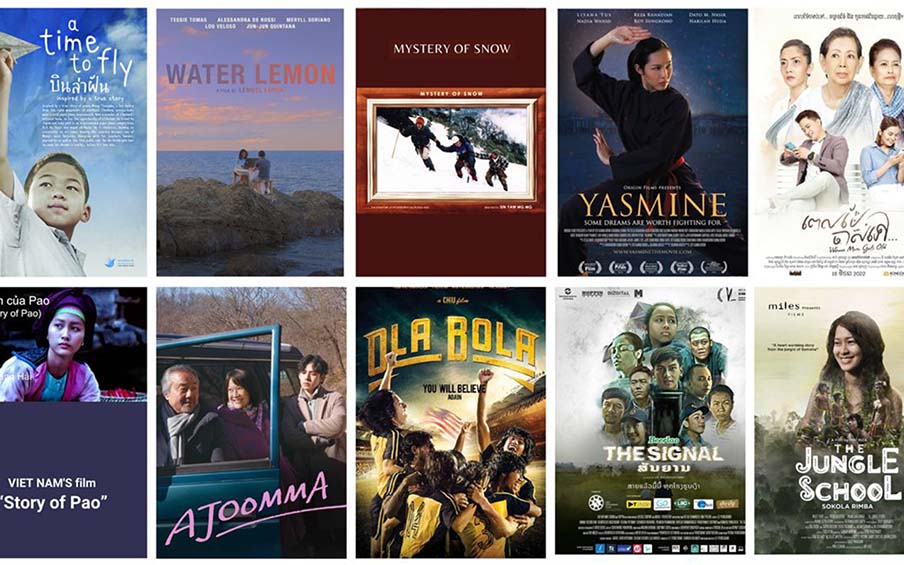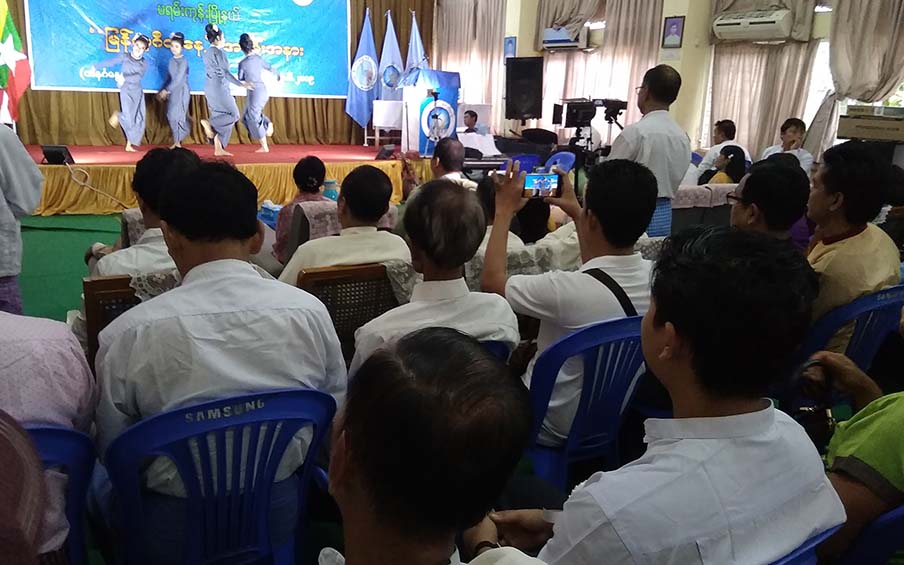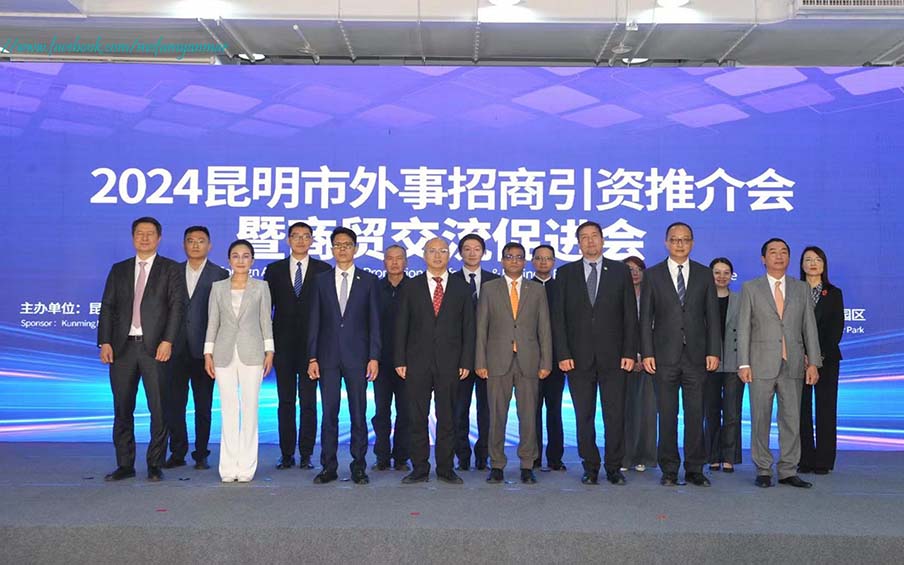A brief glimpse of two treatises on Myanmar literature by Maung Khin Min (Danubyu)
Saya Maung Khin Min (Danubyu) turned 84 in January 2024. Saya, certainly, is one of the living doyens of the Myanmar Language, linguistics, and literature. A few years ago, there was a commemoration of the publication of his 100th book at the Department of Myanmar at the University of Yangon.
In the just-finished inaugural Grade XII Myanmar Sar exam, there were a few questions regarding Saya Maung Khin Min’s work, which are reproduced in the text. In the Grade XII textbook on Myanmar Sar, there are excerpts from eight articles on linguistics and language use written by Maung Khin Min! Not only students and their teachers but other interested persons can read these articles with benefit (and not only for exam purposes).
I understand that the most recent book by Saya Maung Khi Min is about his teachers, senior colleagues and contemporaries. These ‘vignettes’ are written in the colloquial style (အပြောစကားပြေ၊ စကားပြောသလိုရေး). Yours truly has not had the chance to read his latest book but has read at least nine books (out of around 120?) that Maung Khin Min had published, including his magisterial မြန်မာစာပေခရီး
Myanmar Sarpay Khayee (‘Journey of Myanmar Literature’) and ကိုလိုနီခေတ်မြန်မာစာပေသမိုင်း
Koloni Khit Myanmar Sarpay Thamaing (‘History of Myanmar literature during the colonial period’).
The late Sayagyi U Pe Maung Tin (1888-1973) published his classic မြန်မာစာပေသမိုင်း Myanmar Sarpay Thamaing (‘History of Myanmar Literature’) in 1938 and it has been republished at least ten times. Saya Maung Khin Min’s မြန်မာစာပေခရီး is not a rehash (so to speak) of his own Sayagyi’s (U Pe Maung Tin’s) work but viewed the development of Myanmar literature from a fresh perspective.
While Sayagyi U Pe Maung Tin’s treatise, first published in 1938, ends with the advent of the colonial era in the late 19th century, Maung Khin Min’s book on Myanmar literature during the colonial period continues the developments in the genre from the start of the colonial era (for Lower Myanmar) in 1826 to the time of Independence in 1948. While U Pe Maung Tin’s 1938 treatise encapsulates concisely aspects of Myanmar literature, Maung Khin Min’s မြန်မာစာပေခရီး published in 2014 seventy-six years after U Pe Maung Tin’s book provides a panoramic view of the ‘journey’ of Myanmar literature throughout the ages going back to around 900 years.
The remainder of this article will discuss a comment on a contemporary Myanmar usage that Saya Maung Khin Min critiqued a few months ago- the use of the term သူမ
Usage of the Myanmar phrase thu ma သူမ
In an article published in the 12 September 2023 issue of Sandaw Chain (‘Standard Time’) newspaper, Maung Khin Min wrote that the phrase သူမ (roughly translatable as a third person singular referring to a female) was not a proper Myanmar usage. Maung Khin Min stated that in Myanmar usage(s), whether the third person who is being referred to is a male or a female, as a rule, the gender of the person being referred to is not specifically stated by putting the affix မ ma (when persons referred to are females). This writer would provisionally add that, in a certain sense, what Maung Khin Min wrote is correct. If the gender of the person referred to is male, it does not make sense: it sounds both awkward and preposterous indeed, and it is unacceptable to refer to as သူထီး thu hti (a ‘third person’ male). But is it that awkward — for now and for a while, let’s put in abeyance whether it is a proper or ‘traditional’ Myanmar usage — to refer to a female as a third person by adding the affix မ ma?
It might have been the late writer and poet Saya Dagon Taya (Tarya) (1919-2013) who might have first used the phrase. Even if Dagon Tarya was not the ‘pioneer’ of the phrase သူမ, which, according to Maung Khin Min, did not exist in traditional Myanmar language and usage, he might well have first used the (to me and to others as well) the elegant phrase ေလးနု ေအး (‘gentle and cool breeze’) as well as the (shall we say) less exquisite ဝတ်လစ်စလစ်လမ်းမကြီး (the ‘scantily clad’ major road). One supposes that Saya Maung Khin Min has not commented on these usages ‘devised’ by Saya Dagon Tarya). One realizes, though, that unlike thu ma can be classified as Myanmar syntactical usage, and the above two examples deal with the devising of new phrases by adding affix လေနုအေး and prefix ဝတ်လစ်စလစ်လမ်းမကြီး Arguably, the two phrases devised by Dagon Tarya did not affect or ‘subvert’ traditional Myanmar usages?
Abandoning tradition if necessary to do so: an exhortation of Thakin Ba Thaung
But is strict, if you will, ‘conservative’ adherence to tradition always necessary or advisable? In the early to mid-1930s, Sayagyi Thakin Ba Thaung (1901-1981) wrote in one of his essays that, in certain circumstances, tradition need not always be followed. Reversing or ‘subverting’ the usage ရှေးထုံးကိုလည်း မပယ်နှင့်။ ဈေးသုံးကိုလည်း မကြွယ်နှင့် (‘Do not forsake tradition, do not be a spendthrift in the market’) Thakin Ba Thaung asserted that on certain occasions if needs be, tradition should be abandoned. ရှေးထုံးကိုလည်း ပယ်သင့်က ပယ်ရမည် Likewise, ‘do be a spend drift if you must in the market’) ဈေးသုံးကိုလည်း ကြွယ်သင့်က ကြွယ်ရမည် Thakin Ba Thaung wrote. He was writing an article in which he advocated ‘abandoning’ the traditional method of farming and the industrialization of Burmese farming. What farming one submits should perhaps be applicable to the usage of Myanmar words and phrases. In the history of the Myanmar language, going back centuries, there have been changes in spelling, syntax, and grammar, as well as the addition, deletion, revision, and innovation of phrases, words, and usages. Saya himself stated this in one of his excerpts in Grade XII Myanmar Sar text (on page 140) when comparing the Myanmar Sar of the Bagan era and modern Myanmar Sar in syntax, grammar, vocabulary and style.
To gve one modern (that is less than 100 years old) example: I have quoted Thakin Ba Thaung’s statement in an essay titled ဝိဇ္ဇာနှင့်လယ်ယာ (‘Science and Farming’ or ‘Scientific farming’) reproduced in the Myanmar textbook အထက်တန်းပင်ရင်းစကားပြေလက်ရွေးစင် used for high school students throughout the academic years 1968-69 to 1985-86. In a brief comment, the compilers of the text wrote at the end of Thakin Ba Thaung’s article that, in the 1920s and 1930s, the term ဝိဇ္ဇာ(contemporary definition is ‘arts subjects’ not ‘art’) denoted ‘science’ which in contemporary usage is သိပ္ပံ. I submit that if the usage of arts and science is reversed in Myanmar terminology in less than a century, then it is not inadvisable, indeed not inappropriate, to use the phrase သူမ.
Two Myanmar phrases in the early 17th century royal orders of King Anaukphetlun
Let’s briefly go back over four hundred years: to the year 1607. On 23 June 1607, King Anaukphetlun of Ava/Inwa issued five Royal Orders ah meint daw on the same day. These Royal Orders are reproduced in typed Myanmar script with skeletal English translations in Volume I of Dr Than Tun’s Royal Orders of Burma (1598-1885). In two of the Royal Orders, the words ရှင်းကွာ (in context ‘divorce’) and မြစ်တား (in context ‘prohibit’/’block’) appear. For well over a hundred years, probably since the mid-19th century, the modern usages for those words were ကွာရှင်း and တားမြစ်. Still, we moderns understand when Anaukphetlun used what can then be described as official usage. If မြစ်တား becomes တားမြစ် and ရှင်းကွာ becomes ကွာရှင်း ‘breaking tradition’ is it un-sacrosanct to use သူမ?
‘Not that sort of boy’: juxtaposing the traditional versus the now dominant meaning of ‘gay’
In the English language, too, the usages and meanings of particular words change, expand, and perhaps ‘metamorphose’. Yours truly does not know when and how the (traditional?) meaning of the word ‘gay’ (‘happy’) changed to the now more prevalent connotation ‘lover of or being infatuated with persons from the same sex (mainly by males)’. When I used the phrase When I see a child at play … reminds me of the time when I was joyful and gay’ in my poem in English ‘When I see a Child at Play’ first published in the 24 September 1972 issue of the Sunday Supplement of the now defunct The Guardian newspaper in Rangoon I do not mean I was that kind of boy! Only about two decades later, I realized the ‘other’ perhaps now predominant meaning of the word ‘gay’!
Reverting to သူမ – what I discern from Saya Maung Khin Min’s article is that he did not – quite specifically state the phrase should not be used – only that it is not traditional usage. I have learned a lot from Saya’s books and articles and would again like to record my appreciation for his notable contributions to the Myanmar language and literature.


